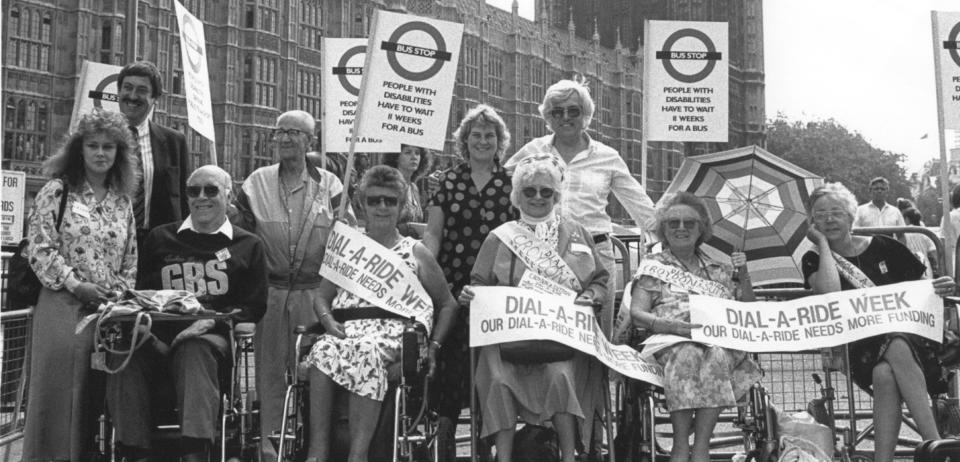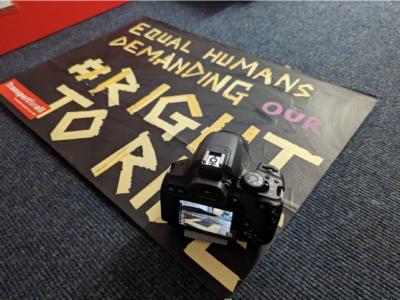
About the archive
The evolving digital archive – a collection of stories and artefacts – will tell us about the experiences of disabled people travelling, and the decades of campaigning for accessible transport by individual campaigners, as well as Transport for All and its predecessor organisations. For the four decades that we’ve existed, staff members, board members and volunteers have been collecting newspaper clippings, documents, photos, videos, and protest placards and banners that help show the work that we have done, as well as remember the achievements of others. We will be frequently updating the archive to showcase more of these items.
Using this archive, we will build a picture of the history of accessible transport and tell those stories, bringing this heritage to as many Disabled people as possible. Anyone will be able to browse the archive items whenever they like and learn more about the history by looking through our digital exhibition articles. The archive is for everyone, from academic researchers to casual viewers and aims to show how far we’ve come, as well as how far we have still to go.
The archive’s been co-produced with a Project Steering Group of Transport for All members who have made decisions and developed the project aims and tasks. We have also worked with disabled history enthusiasts who’ve conducted oral histories and researched topics for the digital exhibition pages. We have many more opportunities coming up, such as attending events and submitting to the archive to help us build it to be as varied and representative as possible.
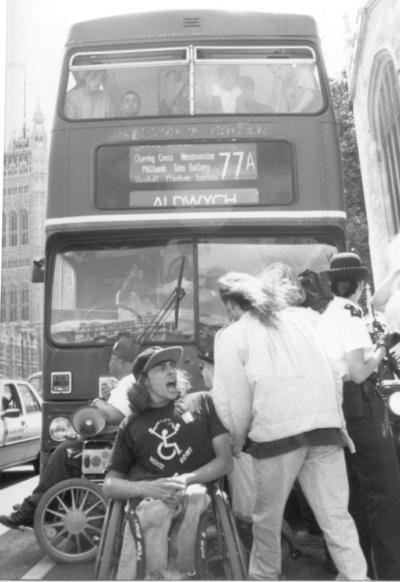
Why is preserving our history important?
The stories of Disabled people’s campaigning are vital to preserve. Stories of our past are understudied, and many people don’t even know that there is such a thing as disability history.
From the early days of disability activism in the UK our community have been championing the rights of disabled people and fighting for accessible transport. Over the past four decades, we have seen wheelchair users chaining themselves to buses to demand that “we will ride”, the first accessible bus routes in London in the 90s, and the progress brought on by the spotlight of the 2012 Olympics and Paralympics. Yet much of our work hasn’t been on gaining more rights, but instead trying hard to prevent the loss of what we already had.
We have fought against the attempt to strip us of our right to turn up and go at train stations, against the bus drivers who demand that we wait, sometimes hours, for a bus that isn’t carrying a pushchair in the wheelchair space and against the closure of ticket offices and reduction of staff, both on the Underground in 2010 and the National Rail system in 2023.
During this time thousands of disabled people have fought for greater transport accessibility. We must look back and reflect upon the massive changes we have seen in this period, and pay homage to the stories and lives of disability campaigners who fought so hard for accessible transport, while recognising that we still have a long way to go.
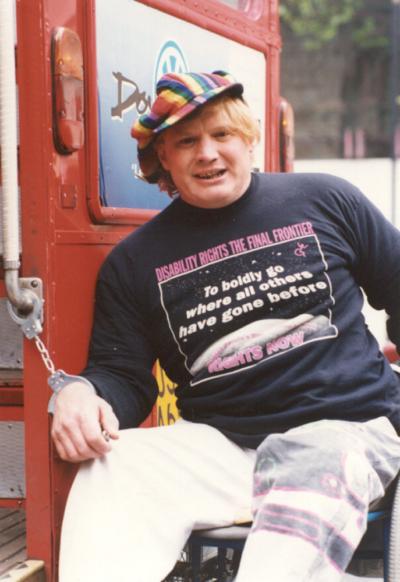
How you can get involved:
- Submit Your Story: Share your own history, personal anecdotes, or any artifacts that hold significance. Stay tuned for submission guidelines and instructions, which will be made available on this page in January.
- Browse the Archive: Learn about our history and see the items we have so far. The archive will be updated regularly to add even more items we have, and will hopefully become the largest repository of accessible transport heritage in the UK, and maybe the world!
- Spread the Word: Help us reach as many members of the community as possible. Share our project on social media, discuss it with your friends and family, and let them know that all our stories matter.
Other ways to get involved
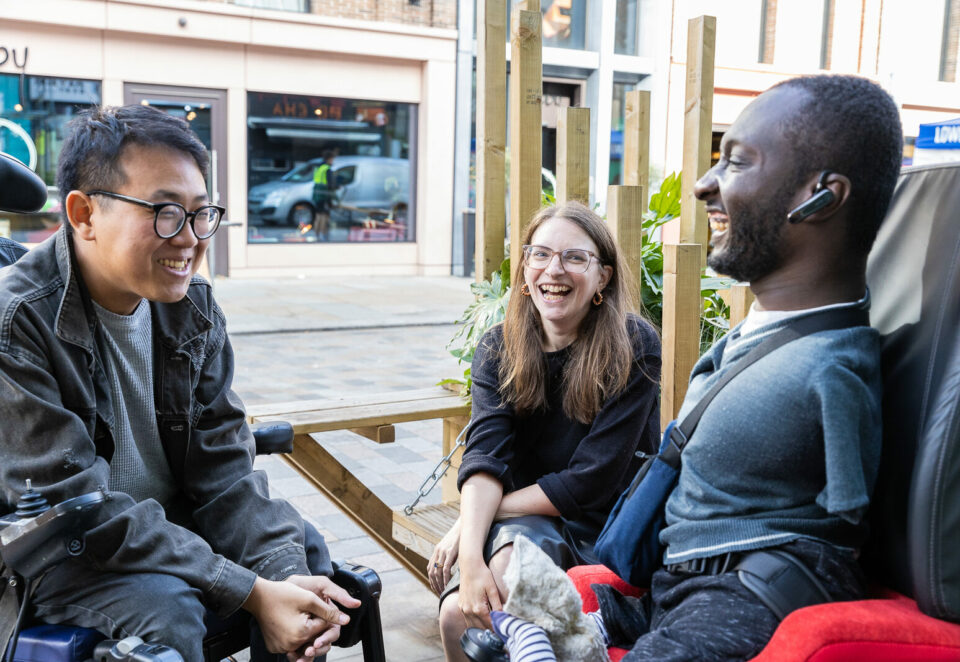
Events
We run a range of events (online, onsite, and hybrid) where members can socialise, exchange ideas, and shape the work of the organisation.
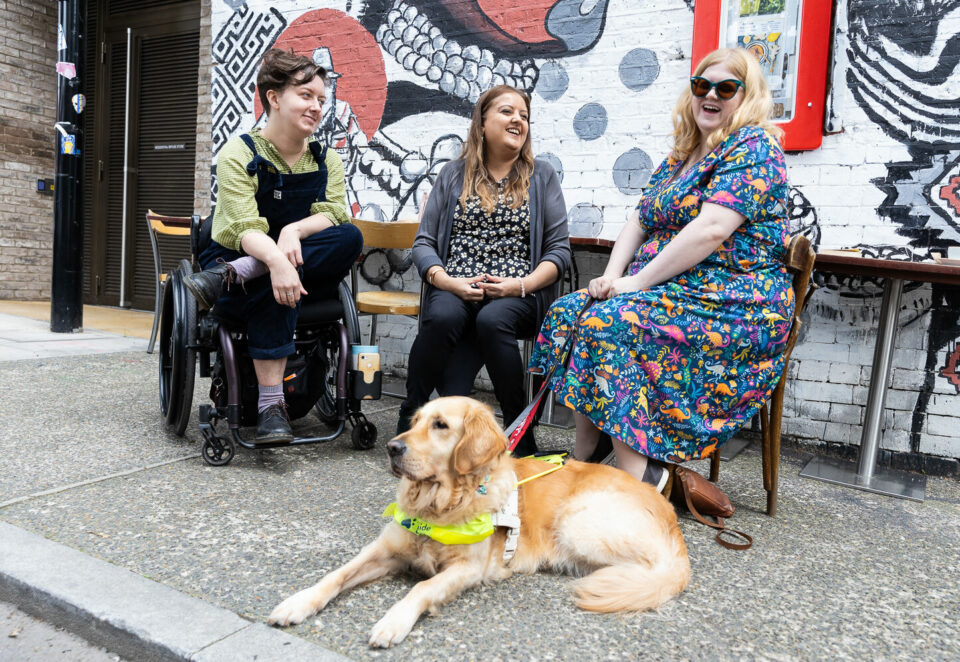
Become a member
Join our community (it’s free!) so you can stay up to date with ways to get involved.
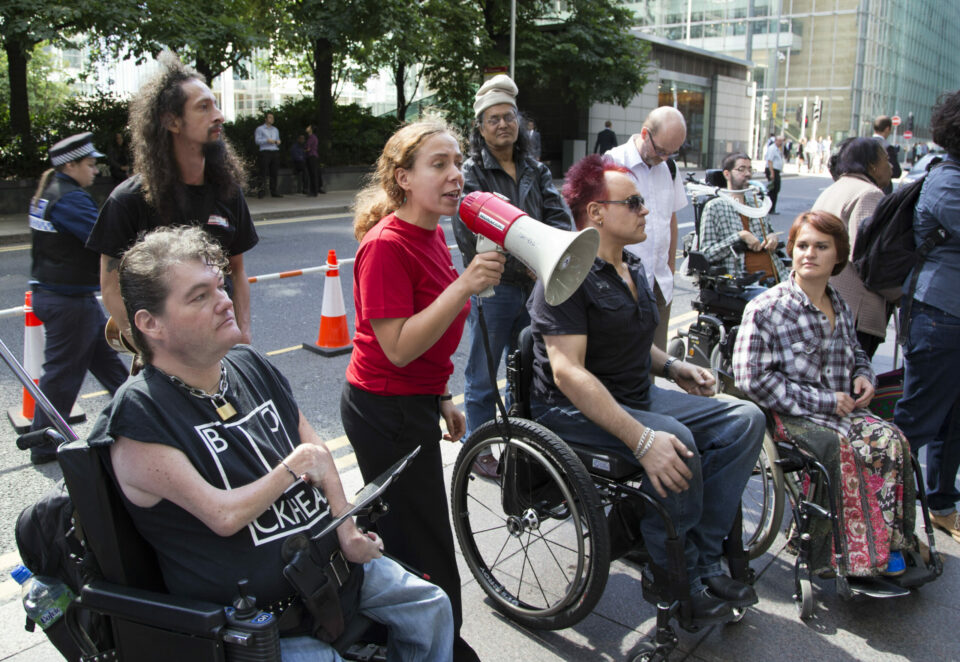
Campaign
See which issues we’re currently tackling, and how you can get involved.

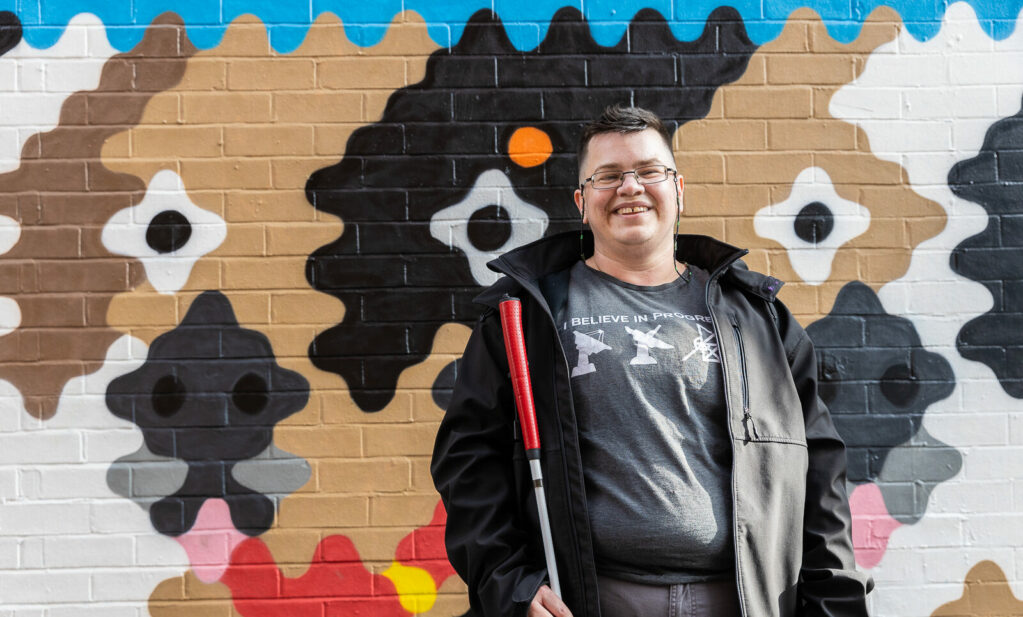
Support us
We can't do this without your support. Take action, give what you can, or sign up as a member - and join our movement of disabled people fighting for a better future.
